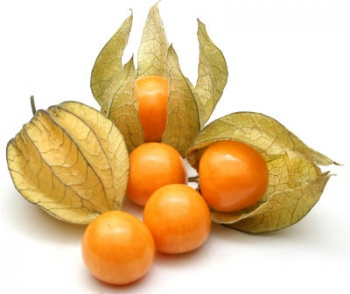Cape Gooseberry
From Wikiwel
Other Names : Physalis peruviana, Peruvian cherry, Cape Gooseberry, Aztec berry, poha, harankash, Physalis, Golden Berries, Golden Berry
is native to South American Andes region. The berries are small, round, orange-yellow color, encased inside a Chinese lantern like papery thin husk.
See also :
Special Precautions of Cape Gooseberry
- Eating unripe golden berries can be poisonous, so picking them from the wild is usually not recommended.
- If you suffer from an allergy to other berries, be sure to speak with your doctor.
- Although golden berries are more closely related to nightshade plants than cherries or other berries, the allergenic potential is much the same.
Health Benefits and uses of Cape Gooseberry are
- low in calories; 100 g of fresh berries provide only 44 calories. As in blackcurrants, they too have significantly high amounts of phenolic phytochemicals especially flavones and anthocyanins. These compounds have been found to have numerous health-benefiting effects against cancer, aging, inflammation, and neurological diseases.
- They have moderately well in anti-oxidant values. At 3277 umol TE/100g, gooseberries have oxygen radical absorbance capacity (ORAC) value comparable to that of red currants (3387umol TE/100g).
- The berries are moderate source of vitamin-C. 100 g of fresh berries provide 27.7 mcg or 46% of daily-recommended intake values of vitamin C. Research studies have shown that consumption of fruits rich in vitamin C helps body develop immunity against infectious agents and help scavenge harmful oxygen free radicals from the body.
- They have small amounts of vitamin A. 100 g berries has 290 IU or 10 % of RDA of this vitamin. Vitamin A is required for maintaining integrity of mucus membranes and skin, and essential component of visual cycle. In addition, consumption of natural fruits rich in vitamins and flavonoid anti-oxidants has been found to protect from lung and oral cavity cancers.
- Fresh berries contain small amounts of essential vitamins such as pyridoxine (vitamin B-6), pantothenic acid (vitamin B5), folates, and thiamin (vitamin B-1). Some of these vitamins are essential in the sense that the body requires them for metabolism from external sources to replenish.
- Furthermore, gooseberries contain adequate levels of minerals such as copper, calcium, phosphorus, manganese, magnesium, and potassium.
